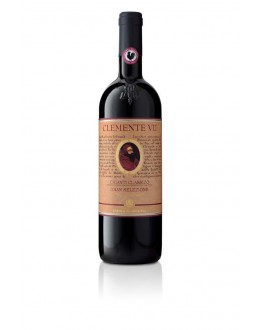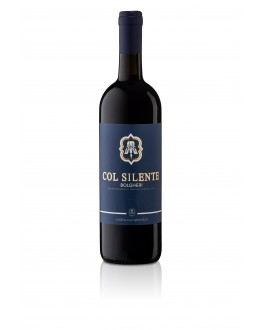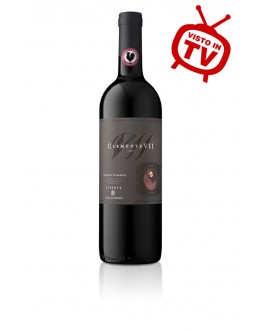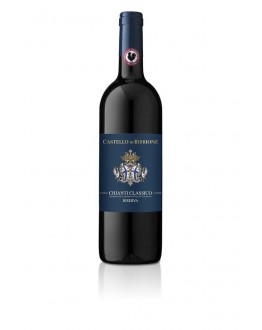Tuscany is famous all over the world for its breathtaking landscape beauty, for the immense artistic heritage of its wonderful cities of art, for the small villages that have remained suspended over time.
But it is also famous for its great food and wine tradition , full of iconic products exported all over the world.
Although in this region there is no lack of examples of excellent white wines - the Vernaccia di San Gimignano was the first Italian DOC - Tuscany is famous above all for its great red wines , often at the top of the world rankings drawn up by the most important magazines in the sector.
So let's try to put order in the boundless territory of Tuscan red wines by talking about the denominations most important for history , the most famous and those in able to produce best Tuscan red wines.
Chianti DOCG and Chianti Classico DOCG
 One cannot but think of Tuscany without thinking of Chianti . Al Chianti as an area, as a historical sub-region whose origins date back to the Middle Ages. An area recognized for its great enological vocation since the late Renaissance, so much so that the first draft of a specification on the production of Italian wine dates back to this period.
One cannot but think of Tuscany without thinking of Chianti . Al Chianti as an area, as a historical sub-region whose origins date back to the Middle Ages. An area recognized for its great enological vocation since the late Renaissance, so much so that the first draft of a specification on the production of Italian wine dates back to this period.
I Chianti wines are wines of character like its territory, and like its territory they have two faces: that of the rugged rocks of Galestro del Macigno Chianti and the thick woods, comparable with a poetic license to the biting tannins of young Sangiovese; the other side is that of the rolling hills, the icon of Tuscany, as gentle as the king of Tuscan vines when it has been appropriately aged.
The disciplinary provides that Chianti can be produced with Sangiovese in purity or in a blend with native vines such as Colorino, Canaiolo, Ciliegiolo and Mammolo and other permitted vines.
In Chianti you can appreciate young red wines , recognizable by the typical fragrant perfume of violet such as Chianti vintage, but also more important wines such as Chianti Riserva and the Chianti Gran Selezione, a type recently introduced to produce wines of greater structure as we have in Montalcino for example.
The ideal pairing is with roast meat or large stews of traditional Tuscan game, but also aged cheeses go very well, especially with the Riserva.
Brunello di Montalcino DOCG
Again Sangiovese (clone known as Sangiovese Grosso), this time in purity to be regulated, for this reason it is one of the most important wine appellations of Tuscany.
Here we produce one of the greatest Italian wines , Brunello di Montalcino, a long-aged wine (2 years in cask + 4 months in bottle for the base and 3 years in cask + 6 months in bottle for the Riserva).
A wine of great structure and longevity , destined to age in the cellar for a long time, giving great complexity to the opening. For the combination, the indications of Chianti roughly apply, considering however that here we start with a more important structure.
It is worth mentioning that there is also an interesting relapse DOC, Rosso di Montalcino DOC .
Regarding the best combinations with Brunello di Montalcino, what has been said for Chianti is valid, considering however that here we start with a more important structure. So long-cooked meats, but also very aged cheeses.
Vino Nobile di Montepulciano DOCG
 Another historical Tuscan denomination of great importance, that of Vino Nobile di Montepulciano DOCG has suffered from the intense and valiant competition of nearby Montalcino and Chianti, with which it almost borders.
Another historical Tuscan denomination of great importance, that of Vino Nobile di Montepulciano DOCG has suffered from the intense and valiant competition of nearby Montalcino and Chianti, with which it almost borders.
The great wine vocation of this area is testified by the archaeological finds found here but also by the attestations of kings and popes over the centuries who appreciated its kindness.
Sangiovese (called here Prugnolo gentile) is still the main vine of this appellation, vinified alone or in a blend like Chianti together with the autochthonous Colorino, Ciliegiolo, Canaiolo, or the international Cabernet Sauvignon, Merlot .. and others grape varieties allowed.
The specification includes two types: Vino Nobile di Montepulciano DOCG vintage and Riserva. Do not forget the Rosso di Montepulciano DOC relapse DOC.
On the best combinations with Nobile di Montepulciano we can consider the things said for Chianti and Brunello, considering that usually in terms of intensity and structure we are in the middle of the two.
Bolgheri DOC and Bolgheri Sassicaia DOC
Probably the most famous, the most awarded and alas the most counterfeit of Tuscan wines, Sassicaia has become such an important wine that it has established a specific DOC after dominating global rankings as an IGT wine for years. Sassicaia paved the way for the fortune of this area of coastal Tuscany, which starting from Castagneto Carducci includes various municipalities in the area.
Bolgheri has made known and appreciated the Tuscan Bordeaux cuts, the so-called Super Tuscans, to the great Italian and also international public (even if the term was used for a pure Sangiovese for the first time). Cabernet Sauvignon, Cabernet Franc, Merlot, therefore, but Bolgheri has also been able to enhance the wines of another important French wine region, the Rhone Valley: Syrah and Viogner above all.
This is the area where some of the most famous Tuscan wines are produced: Sassicaia in fact, but also Masseto, Ornellaia, Messorio, Grattamacco and many others.
Morellino di Scansano DOCG

Another denomination with the sea in front, but with an ancient volcano behind it, that of Morellino di Scansano in recent years has become one of the most popular among those of Tuscan red wines. Its lightness, the sapidity brought by the sea, the minerality of the soils, the soft tannins, make it an extremely drinkable and not demanding wine, meeting the taste of all palates.
Also for this DOCG the disciplinary provides for two types: Morellino di Scansano DOCG vintage and Riserva.
We remind you that for Newsletter subscribers there is a 10% voucher, subscribe now!

 One cannot but think of Tuscany without thinking of Chianti . Al Chianti as an area, as a historical sub-region whose origins date back to the Middle Ages. An area recognized for its great enological vocation since the late Renaissance, so much so that the first draft of a specification on the production of Italian wine dates back to this period.
One cannot but think of Tuscany without thinking of Chianti . Al Chianti as an area, as a historical sub-region whose origins date back to the Middle Ages. An area recognized for its great enological vocation since the late Renaissance, so much so that the first draft of a specification on the production of Italian wine dates back to this period.



















